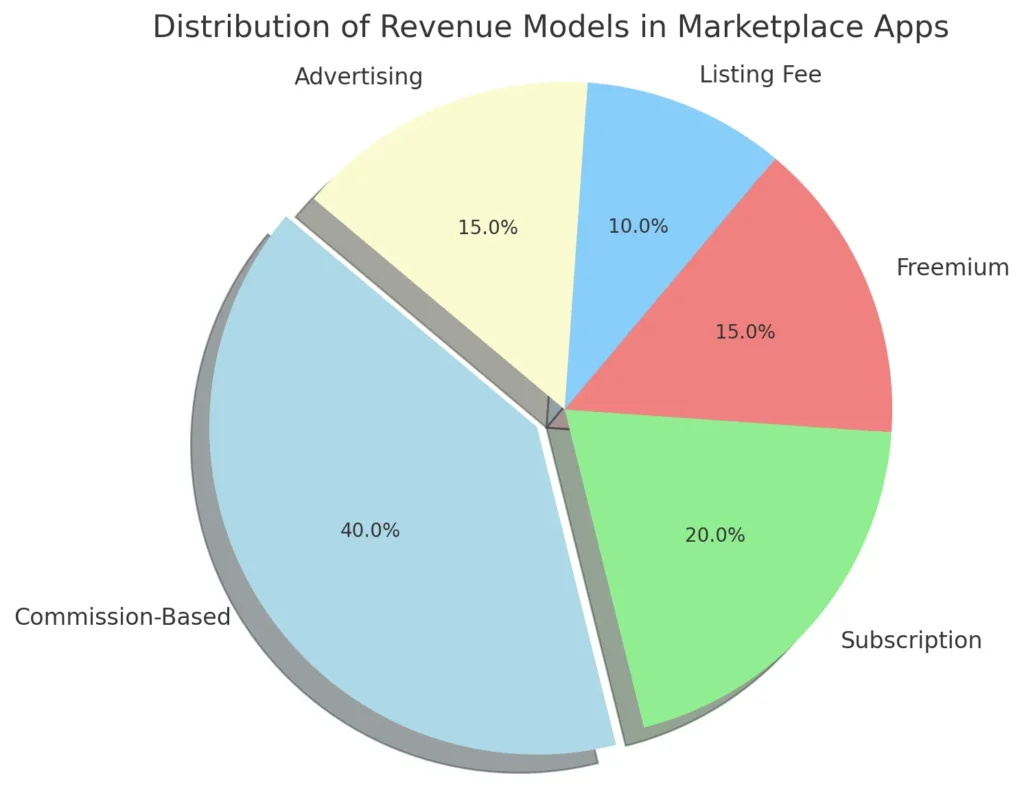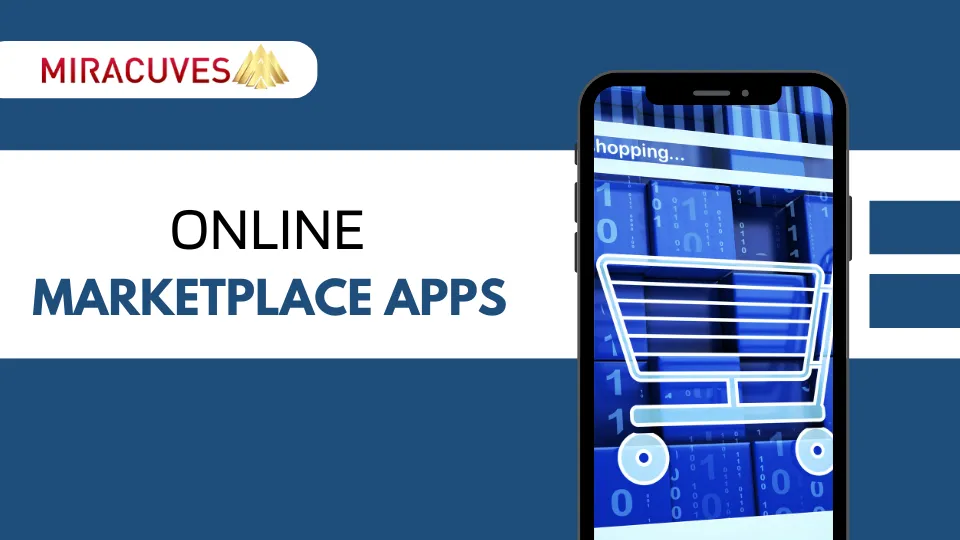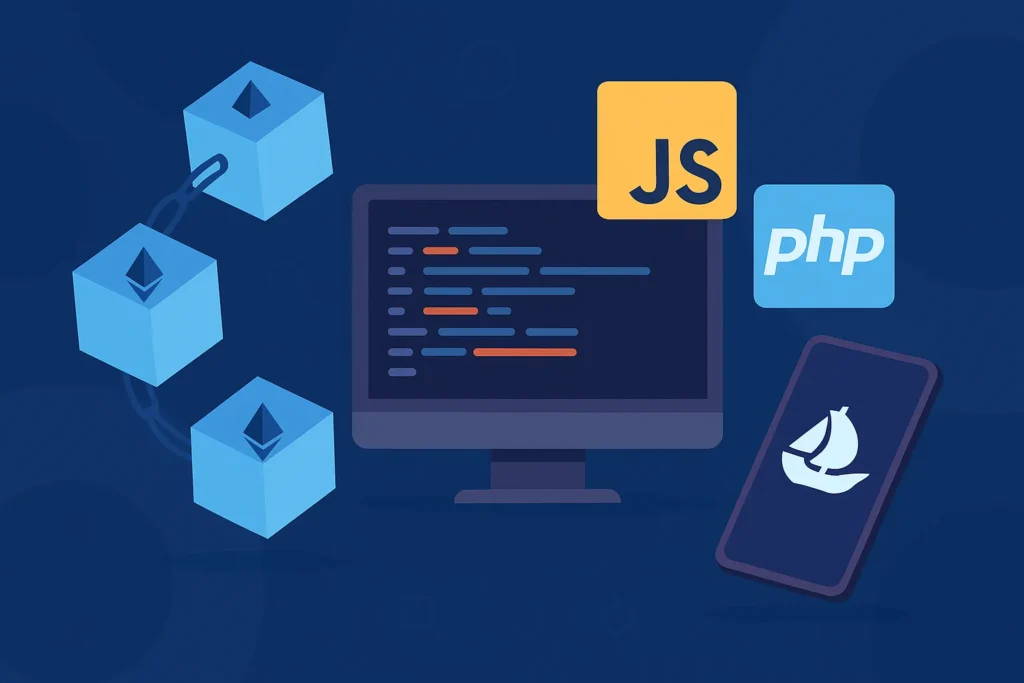The digital age has revolutionized commerce, with online marketplace apps at the forefront. These platforms connect buyers and sellers across various industries, allowing transactions to take place effortlessly from anywhere in the world. Unlike traditional retail, online marketplaces don’t own inventory; instead, they serve as intermediaries, facilitating smooth transactions for goods and services.
In recent years, the popularity of online marketplaces has surged. Factors like the convenience of shopping online, the global shift toward digital solutions, and the impact of events like the pandemic have driven consumers and businesses alike to embrace these platforms. Whether it’s Amazon, Alibaba, or Etsy, online marketplace apps offer vast product catalogs, competitive pricing, and access to global markets—all while reducing operational costs for businesses.
Understanding the different types of marketplace apps and how they function is crucial for businesses and consumers alike. In this article, we’ll explore various marketplace models and their unique benefits, giving insight into the growing role of digital commerce in today’s world.
Types of Online Marketplace Apps
Online marketplace apps can be classified into several types based on their business models and target audiences. Understanding these types helps both businesses and users select the right platform for their needs:
| Type | Description | Examples |
| B2C | Businesses sell directly to consumers. | Amazon, Walmart |
| B2B | Businesses sell products/services to other businesses. | Alibaba, ThomasNet |
| C2C | Consumers sell directly to other consumers. | eBay, Craigslist |
| Vertical | Focuses on a single product category. | TaskRabbit, TrueFacet |
| Horizontal | Offers a wide range of product categories. | Etsy, Flipkart |
| Global | Operates internationally across multiple regions. | eBay, AliExpress |
1. B2C (Business-to-Consumer) Marketplace Apps
B2C marketplace apps connect businesses directly with consumers. They offer a wide variety of products or services that businesses sell directly to end customers. B2C apps tend to have the largest user base because they cater to individual shoppers looking for a wide range of goods.
- Example: Amazon, the largest B2C marketplace globally, allows businesses to list and sell products directly to millions of consumers worldwide. It offers a diverse range of products, from electronics to groceries.
Key Advantages:
- Cost-efficient for businesses due to the lack of intermediaries.
- Ability to reach a global audience.
- Automated systems for inventory and sales tracking.
2. B2B (Business-to-Business) Marketplace Apps
B2B marketplace apps enable businesses to sell to other businesses, typically focusing on wholesale or bulk transactions. These platforms streamline procurement processes for businesses by allowing them to browse suppliers and compare offerings in one place.
- Example: Alibaba is a leading B2B marketplace, connecting businesses with suppliers worldwide, primarily in the manufacturing sector. It provides businesses with access to bulk goods and the ability to negotiate pricing directly with suppliers.
Key Advantages:
- Large-volume purchases at lower prices.
- More secure transactions through contracts.
- Specialized payment terms and tax advantages.
3. C2C (Consumer-to-Consumer) Marketplace Apps
C2C marketplace apps are designed to facilitate direct sales between individual consumers. These platforms allow users to sell personal items, used goods, or niche products directly to other users, often with minimal involvement from the platform itself.
- Example: eBay is a well-known C2C platform where individuals can sell everything from collectibles to electronics. The platform uses auctions and direct sales to facilitate transactions between users.
Key Advantages:
- Access to unique and rare products.
- Low setup costs for sellers.
- Flexible pricing through auctions and negotiations.
Each marketplace model serves a distinct purpose, catering to different needs within the digital commerce landscape. Whether you’re a business looking to sell directly to consumers, a company in search of suppliers, or an individual aiming to sell personal goods, there’s a marketplace type suited to your needs.
Other Types of Marketplace Apps
In addition to the core B2C, B2B, and C2C models, there are several other specialized types of marketplace apps based on the products they offer and how they operate:
1. Vertical Marketplaces
These platforms focus on a single product category or niche. By specializing, they cater to highly specific audiences, offering curated and often higher-quality products.
- Example: TaskRabbit, a marketplace for freelance labor such as home repairs or moving services.
Advantages:
- Focused customer base.
- Higher trust due to specialization.
2. Horizontal Marketplaces
Horizontal marketplaces offer a wide variety of product categories, catering to diverse customer needs in one place. They allow users to shop for different types of products across industries.
- Example: Etsy, which sells everything from handmade crafts to vintage items.
Advantages:
- Large customer base due to variety.
- Cross-selling opportunities for businesses.
3. Global Marketplaces
These marketplaces operate on an international scale, connecting buyers and sellers across multiple countries. They support various currencies, languages, and logistics solutions to facilitate global trade.
- Example: eBay and Amazon, which allow businesses to sell globally with minimal restrictions.
Advantages:
- Global reach, expanding market opportunities.
- Ability to tap into international trends and demands.
These marketplace types offer flexibility and variety, catering to different business models and customer preferences. Their specialization or broad scope can help businesses reach their target audience more effectively based on their product offerings.
Also Read :- How to Budget for Mobile App Development: A Step-by-Step Guide
Key Features of Successful Marketplace Apps
To thrive in the competitive digital marketplace, certain features are critical for the success of a marketplace app. These features enhance the user experience and drive engagement for both buyers and sellers:
| Feature | Benefit |
| User-Friendly Interface | Easy navigation improves user experience. |
| Secure Payment Systems | Ensures safe and trusted transactions. |
| Rating & Review System | Builds trust and credibility among users. |
| Push Notifications | Keeps users informed of updates and offers. |
| Customer Support | Quick issue resolution for buyers and sellers. |
| Security Measures | Protects users from fraud and cyber threats. |
1. User-Friendly Interface
A seamless and intuitive design is essential for easy navigation. Buyers need to find products effortlessly, and sellers should be able to manage listings and track sales efficiently. A clean, organized layout encourages repeat usage.
2. Secure Payment Systems
Trust is a key component in any online transaction. Secure payment gateways, encryption, and multi-factor authentication ensure that users feel safe sharing personal and financial information. Secure payment options, including support for multiple payment methods, build trust and drive sales.
3. Rating & Review Systems
A strong rating and review system is crucial to both buyer trust and seller credibility. Buyers rely on feedback from previous customers to make informed decisions, while sellers benefit from positive reviews that enhance their reputation. This feature also helps marketplace platforms maintain quality control.
4. Push Notifications & Real-Time Updates
Push notifications alert users to important events such as new product listings, discounts, or updates on orders. Real-time updates keep users informed, helping improve the overall shopping experience and increasing engagement.
5. Customer Support and Contact Systems
Successful marketplace apps need reliable customer support, including chat systems, FAQs, and phone or email support. This allows both buyers and sellers to quickly resolve issues, improving satisfaction and retention.
6. Strong Security Measures
Security features, such as OTP-based logins, encryption, and fraud detection systems, ensure that both buyers and sellers are protected from cyber threats and fraud, which is essential for maintaining trust and safeguarding sensitive information.
These features form the backbone of a successful marketplace app, ensuring a smooth, secure, and engaging experience for users. By integrating these elements, marketplace apps can attract a loyal customer base and grow sustainably.
From real-time inventory management to secure payment gateways
Our marketplace app framework provides everything you need
to deliver a seamless experience for both buyers and sellers.
Revenue Models for Marketplace Apps

Marketplace apps operate on various revenue models to generate income, enabling them to provide services while sustaining their platforms. Here are the key revenue models used:
| Revenue Model | Description | Examples |
| Commission-Based Model | Takes a percentage of each transaction. | Amazon, eBay |
| Subscription Model | Charges a recurring fee for premium features. | LinkedIn, OkCupid |
| Freemium Model | Free access with paid upgrades for extra features. | Craigslist, Freepik |
| Listing Fee Model | Sellers pay a fee to list products. | Etsy, Realtor.com |
| Advertising Model | Sellers pay for enhanced product visibility. | Amazon, eBay |
1. Commission-Based Model
In this model, the marketplace app takes a percentage of each transaction made on the platform. Either the buyer or seller is charged a fee for every sale.
- Example: Amazon and eBay charge sellers a commission for every sale made through their platform.
Advantages:
- Scales with business growth.
- Encourages more listings since sellers only pay after a sale.
2. Subscription Model
Users, either buyers or sellers, pay a recurring fee (monthly or yearly) to access premium features or listings. This provides businesses with steady revenue, independent of sales volume.
- Example: LinkedIn and OkCupid offer premium subscriptions for enhanced features like advanced search or priority listings.
Advantages:
- Predictable revenue stream.
- Users who commit to premium plans tend to be more engaged.
3. Freemium Model
In the freemium model, basic services are offered for free, while advanced features are locked behind a paywall. This model helps attract a large user base by offering free access, while monetizing through premium upgrades.
- Example: Craigslist offers free listings, but charges for certain categories like job postings or real estate listings.
Advantages:
- Attracts a broad user base with no upfront costs.
- Revenue is driven by users who want enhanced features or visibility.
4. Listing Fee Model
Here, sellers pay a fee to list their products or services on the platform, regardless of whether a sale is made. This model is often used for high-value items or services.
- Example: Etsy and Realtor.com charge sellers a fee for each item they list on the marketplace.
Advantages:
- Ensures revenue even for unsold items.
- Ideal for high-ticket categories like real estate or vehicles.
5. Advertising Model
Marketplace apps often offer third-party advertisers the ability to promote their products or services within the app. Sellers can pay to have their listings featured or displayed more prominently.
- Example: Amazon and eBay offer sponsored listings where sellers can pay for better visibility in search results.
Advantages:
- Generates additional revenue without directly affecting transaction fees.
- Boosts visibility for sellers willing to invest in promotion.
These revenue models can be used individually or in combination, providing flexibility and diverse income streams for marketplace platforms.
Also Read :- How Much Does It Really Cost to Build an App in 2024? A Complete Breakdown
Benefits of Online Marketplace Apps
Online marketplace apps offer a range of benefits for both businesses and consumers, making them a popular platform for buying and selling goods and services.
1. Wide Reach and Scalability
Marketplace apps give sellers access to a global audience, expanding their reach beyond local markets. For consumers, they offer an extensive variety of products and services in one place, making shopping convenient and efficient.
2. Cost-Effective for Sellers
Marketplace apps reduce the need for businesses to build and maintain their own e-commerce platforms. Sellers can leverage the app’s infrastructure, payment systems, and customer base, minimizing marketing and operational costs.
3. Data-Driven Insights
Sellers on these platforms gain access to valuable sales data and customer insights. Analytics tools help them understand consumer behavior, allowing for better inventory management, pricing strategies, and marketing efforts.
4. Convenient Product Comparison
For consumers, marketplace apps simplify the process of comparing prices, product features, and reviews across different sellers. This transparency empowers buyers to make informed decisions and find the best deals.
5. Secure Transactions
Most marketplace apps prioritize security, ensuring that buyers and sellers have safe payment gateways, fraud detection mechanisms, and reliable customer support. These measures build trust and encourage users to engage in more transactions.
By offering these key advantages, marketplace apps continue to reshape how businesses operate and how consumers shop, providing a streamlined, efficient, and secure environment for online commerce.
Emerging Trends in Online Marketplace Apps
The landscape of online marketplaces is continuously evolving, with several key trends shaping the future of e-commerce:
1. AI-Powered Personalization
Artificial intelligence (AI) is being used to create personalized shopping experiences, recommending products based on user behavior and preferences. This trend helps consumers find what they need faster and increases conversion rates for sellers.
2. AR and VR Integration
Augmented reality (AR) and virtual reality (VR) are enhancing the online shopping experience by allowing customers to “try” products virtually before buying, such as seeing how furniture looks in their homes or trying on clothes virtually.
3. Rise of Mobile Commerce (M-Commerce)
Mobile-first platforms like Shopee and MercadoLibre are seeing exponential growth, especially in regions with high smartphone penetration. Consumers increasingly prefer shopping via mobile apps for convenience, making mobile optimization essential for success.
4. Social Commerce Integration
Marketplace apps are integrating social networking features, combining the power of e-commerce and social media. Platforms like Instagram and TikTok are enabling users to discover and buy products directly from social media posts, making shopping more engaging and spontaneous.
5. Blockchain and Cryptocurrency Payments
Blockchain technology is introducing decentralized marketplaces and enabling secure, transparent transactions. Some marketplaces are beginning to accept cryptocurrencies like Bitcoin for payment, providing more flexibility in transaction methods.
6. Sustainability and Ethical Shopping
There’s a growing demand for sustainability in e-commerce, with marketplaces promoting eco-friendly products and supporting ethical business practices. Consumers are increasingly choosing platforms that emphasize environmental and social responsibility, influencing marketplace business models.
These trends are shaping the future of online marketplace apps, offering innovative, engaging, and efficient experiences for users while helping businesses adapt to changing consumer preferences.
Challenges in Online Marketplaces
While online marketplace apps offer numerous benefits, they also face several challenges that businesses and users must navigate:
1. High Competition
With many sellers offering similar products, marketplaces can become highly competitive. Sellers may engage in price wars, which can reduce profit margins.
2. Platform Fees
Marketplaces often charge commissions, listing fees, or membership costs, which can eat into the earnings of sellers, especially small businesses.
3. Loss of Data Control
Sellers often have limited access to customer data on marketplaces, restricting their ability to build direct relationships with their customers and retarget them with personalized marketing.
4. Platform Dependency
Businesses relying solely on marketplace platforms face significant risk if there are policy changes, fee increases, or if they are suspended from the platform. This can disrupt their revenue flow overnight.
5. Fraud and Security Risks
Despite the security features of most platforms, online marketplaces remain vulnerable to fraud, counterfeit products, and disputes. Ensuring the trustworthiness of both buyers and sellers can be a challenge, especially in larger platforms with millions of users.
6. Logistics and Delivery Issues
Marketplace apps need to manage shipping and logistics efficiently, particularly for global marketplaces. Delays or issues with delivery can damage a platform’s reputation and impact customer satisfaction.
These challenges highlight the need for marketplace operators and users to adopt strategies that minimize risks while optimizing the platform’s benefits for sustainable growth.
Conclusion
Online marketplace apps have revolutionized the way businesses and consumers interact, providing a convenient, scalable, and cost-effective solution for global commerce. With a variety of marketplace types—from B2C, B2B, and C2C to vertical, horizontal, and global platforms—businesses can choose the model that best suits their target audience and product offerings. As these platforms evolve, trends like AI personalization, AR/VR integration, and mobile commerce are shaping the future, but challenges such as competition, platform dependency, and security concerns remain.
Are you ready to take your business to the next level with a powerful marketplace app? Miracuves offers turnkey solutions tailored to your needs, whether you want to build a B2B, B2C, or C2C marketplace. With customizable features, secure payment systems, and a user-friendly interface, we ensure a seamless experience for both buyers and sellers.
Don’t wait—grow your marketplace today! Visit Miracuves to explore our ready-made solutions, or contact us to build a custom platform designed for your business. Let’s create your marketplace success story!
Turn your idea into a global marketplace!
Build a platform that connects buyers and sellers with advanced features like real-time product listings, bidding systems, and reputation management.
FAQs
Q1. How long does it take to create an online marketplace app?
Building an online marketplace app can take anywhere from 2 to 6 months depending on its complexity, features, and customization needs. Factors like design, development, testing, and integration with third-party services affect the timeline.
Q2. What are the most profitable types of marketplace apps?
B2C and B2B marketplace apps tend to be the most profitable due to their large user bases, consistent demand, and multiple monetization options, such as commissions, ads, and premium memberships.
Q3. How do online marketplace apps generate revenue?
Marketplace apps typically earn revenue through models like commissions on sales, listing fees, premium subscriptions, advertising, or a combination of these models.
Q4. Are online marketplace apps secure for transactions?
Yes, most marketplace apps employ secure payment gateways, encryption, and fraud detection systems to ensure secure transactions for both buyers and sellers.
Q5. What are the key features to include in a marketplace app?
Key features include secure payments, user-friendly navigation, rating and review systems, customer support, and push notifications for updates and promotions.
Explore our E-commerce app solutions offered by Miracuves – built for reach, performance, and seamless shopping experiences:
Alibaba Like Solution – A B2B marketplace app with multi-vendor support, global trade features, and secure transactions like solution.
Amazon Like Solution – A powerful e-commerce app offering product listings, fast delivery options, and user-friendly shopping tools like solution.
Noon Like Solution– A trusted service offering an easy-to-use platform for shopping, with a wide selection of products across various categories.
Aliexpress Like Solution – An e-commerce service providing affordable products directly from suppliers, ideal for global shoppers seeking variety.
Flipkart Like Solution– A reliable online shopping service offering a variety of products with excellent customer support and delivery options.







